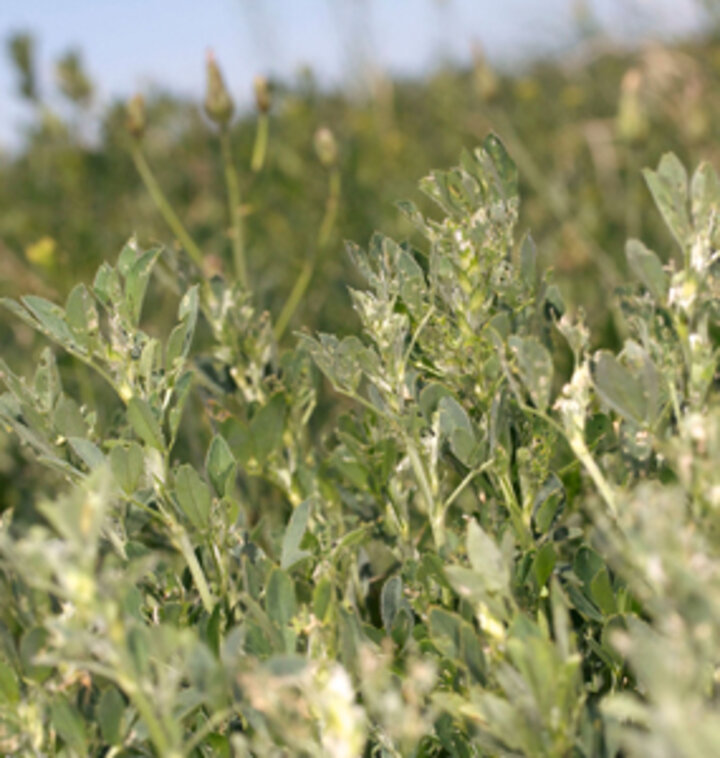
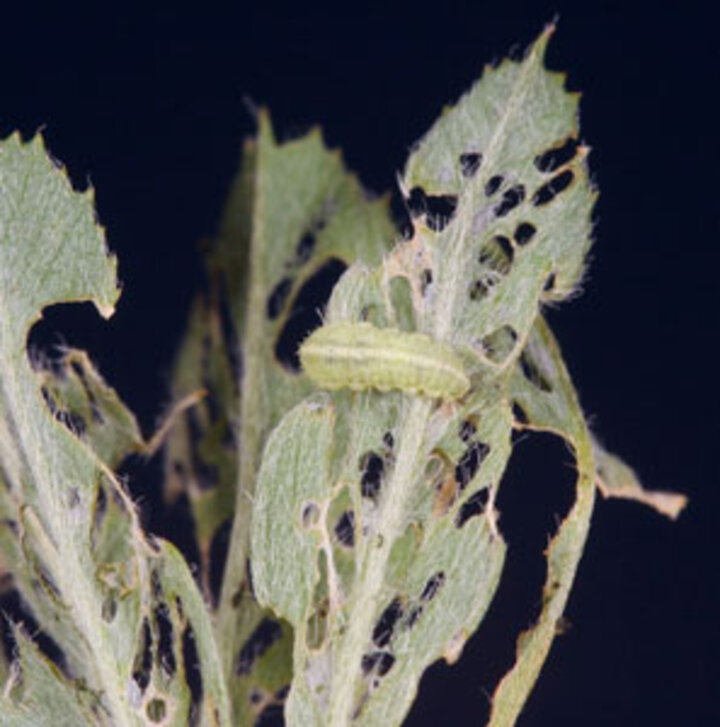

Watch your first cutting alfalfa and the stubble after first cutting for delayed green-up. Serious infestations of alfalfa weevil were found last year in several areas of the Nebraska Panhandle in the first cutting and regrowth. (See CW story.)
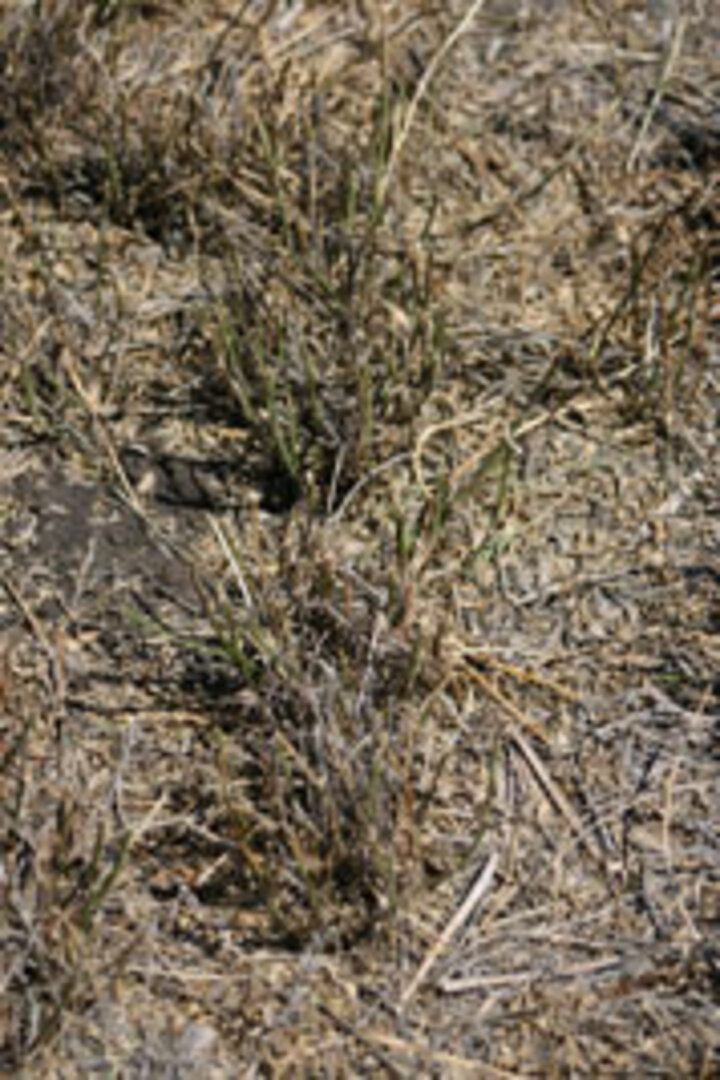

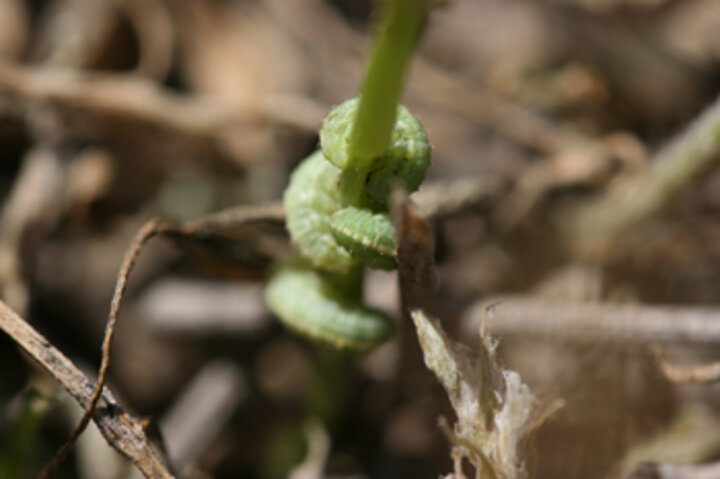
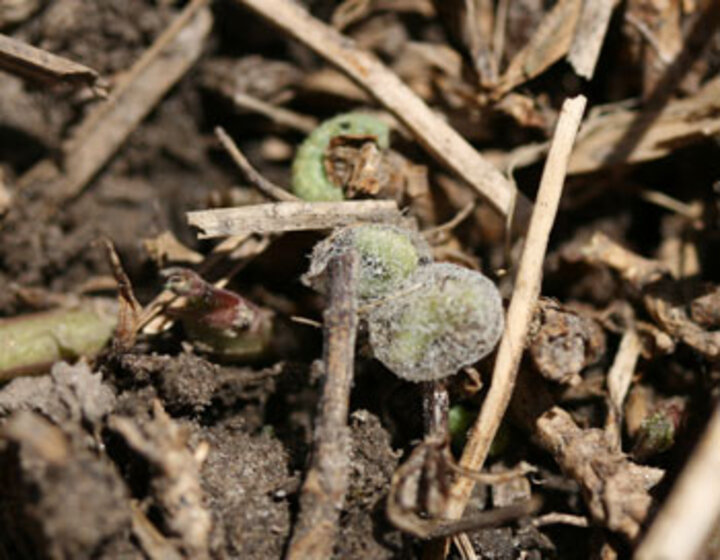
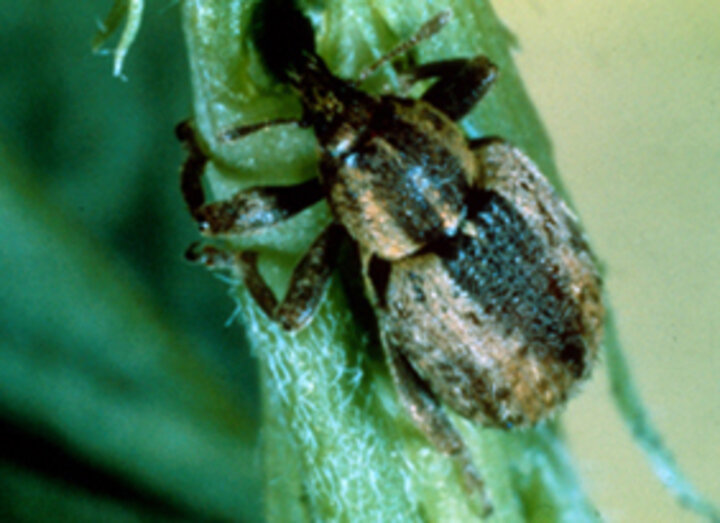
Damage in the early growth of alfalfa in April and May will be small holes eaten in the leaves and may not be noticed. As the larvae grow in size seriously damaged fields take on a white or gray appearance as the heavily skeletonized leaves dry out (Figure 1). Larvae generally damage the first cutting and adults then damage the alfalfa regrowth as this next generation emerges. Many times harvesting the first cutting takes care of the weevil due to mortality to the larval stage. In fields with extremely high populations of larvae this may not be the case. Larval survival can be large enough to hinder or stop regrowth.
In heavy infestations alfalfa growers have noticed damage in alfalfa at first cutting as well as an abundance of weevil larvae as they cut the alfalfa. During the spring of 2013 several growers had noted that the alfalfa was not starting regrowth after harvest (Figure 2). Upon closer inspection, it was noted that the crowns of the alfalfa stubble were loaded with larvae with counts ranging from 15 to 20 larvae per square foot (Figure 3). Additionally, weevil pupae were easily seen in the fields (Figure 4).
Although threshold calculators exist another threshold developed by Colorado State University indicates that a treatment in alfalfa stubble should be made if an average of eight or more larvae or young adults per square foot are present in the field (Figure 5) or more than 50% of the new growth is damaged. Pre-harvest treatment thresholds for first cutting alfalfa are if 30 to 50% of the terminals are damage or if 1.5 to 2 larvae are found per stem.
If the thresholds for treatment are reached a chemical treatment for alfalfa weevil should be applied to protect your crop. Check with your chemical supplier to find the best product for controlling alfalfa weevil. Certain products such as pyrethroids may take longer to knock down alfalfa weevil but are effective products. If possible, avoid insecticide treatment during bloom to protect pollinators. Check the pre-harvest interval for treatment and always follow the label instructions.
John Thomas
Extension Educator, Box Butte County
Jeff Bradshaw
Extension Entomologist, Panhandle Research and Extension Center
